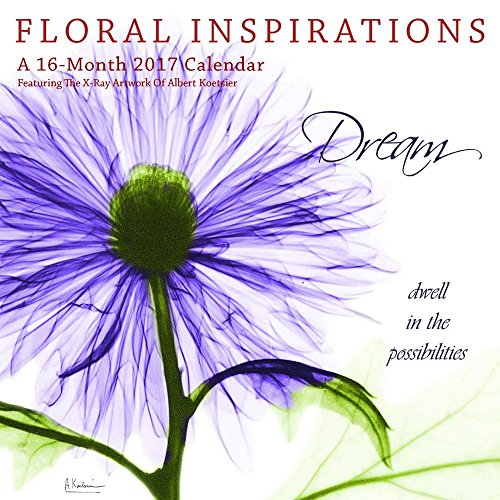
Albert Koetsier’s X-rayography images possess a certain mysteriousness and unusual beauty that is captured in this wonderful 2017 calendar.
The use of X-rays in art, is surprisingly enough, not new. In fact, it is part of the rich history of photography that started almost two hundred years ago.
Photography, as the name suggests, is essentially the act of drawing with photons. Its origins lie in the desire for two-dimensional artists to improve upon art and to directly imprint images with exposure to light. Before the discovery of x-rays, light and photons were considered different entities and the “wave vs. particle” theories had not yet been settled. The first photographic image was made in 1826 by a Frenchman named Joseph Niépce (who patriotically changed his name during the French Revolution to Nicéphore Niépce, the name that he is today known under as the inventor of the internal combustion engine), although the first usable image made with light (i.e. photons) was made by Daguerre in 1839. Daguerreotypes, as they are now known, were used for portraits, landscapes, documentation, and even scientific subjects. The ability to make colored photos did not exist then, so they were often painted in to simulate color. Since color photography is a rather recent discovery, this practice was carried on well into the 20th c. as well. Something that many of us will remember from our childhood is the painting of postcards with translucent paints so that the black and white photograph behind the paint would show through.
There are a few other artists today who use x-ray machines to develop images of flowers. They are often dentists or doctors who have access to such equipment. Some are even satisfied in just using the x-ray negative (similar to those used in hospitals to set bones) as the art itself… Albert s x-rayography is very different. He composes his images poetically by positioning the flowers or shells in ways that tell a story or remind one of an adage. He only uses the x-ray negative to develop the positive, using a specialized projector that he designed just for this purpose. Once developed, he only keeps the best pieces, the ones without flaws, somber patches, or overexposures sometimes only one in ten images is usable. Then he paints the composition in with the same translucent paints used over a century ago on daguerreotypes and postcards. The result is a beautiful union between passionate art and regimented science, monochrome depth and colorful surfaces, philosophical insight and pragmatic distance….
On a purely pragmatically level, the result is also an image that will not fade like a painting, or discolor over time like a computer-generated print. Each piece is a true painted photograph, one of only fifty of each type. After fifty are produced, the x-ray is retired and no new photographs are made from that negative. Like Roentgen and Tasker s x-rays, they will provide centuries of beauty and value to their owner, and piece of the historical record of art history.
This calendar also includes a 6 month (July – December) 2016 planner page, so get yours early!
Calendar includes Holidays, moon phases, image captions with locations and other information, room to write engagements and notes, the highest quality photography and more!


